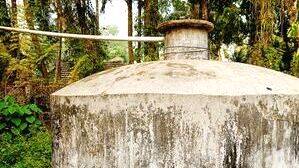

Kerala is the land of forty four rivers. Apart from these, Kerala, which completes the map of water abundance with streams, backwaters, ponds and wells has been in the grip of severe water shortages for some years now with the onset of summer. The Meteorological Center has warned that water scarcity will be more severe than usual this year. The figures of the alarming decrease in the level of underground water storage in the state have come out recently. In short, Kerala will be like a desert with extreme heat and water scarcity in the coming summers.
In general, on top of the damage caused by the reduction in rainfall and climate change, the shortage of clean water that we have caused due to the filling of fields, which used to be the biggest sources of water for villages, and ponds and wells, etc. Coupled with the unregulated construction of borewells and reckless over-consumption of water, the situation becomes more dangerous. Droughts and water shortages are the natural consequence of our anti-environmental activities, forgetting that the rainwater that seeps into the soil is stored as groundwater, and this is the lifeblood of tube wells, other wells and alternative water sources.
It has been many years since Kerala began to see the danger signs of severe drought and severe drinking water shortage to face. Recognizing that symptom, some grassroots rainwater harvesting schemes have been devised and attempted by local governments. When those projects like rain wells and rain harvesting failed, as a next step, the local government department issued an order in 2011 strictly stipulating that rainwater harvesting systems should also be installed in buildings including houses and businesses.
This was later made a part of the building code. The provision was that no building number should be assigned to structures exceeding the specified area without rainwater harvesting system. This condition, which was strictly followed at first, was later conveniently forgotten. Smart people who find a shortcut to anything will have the rainwater tank duly noted on the plan submitted along with the building number application. It's just that the building doesn't have it!
There are houses and other structures in Kerala that cool any severe summer with only the water collected and stored in the rainwater tanks built as part of the buildings. The existing order should be strictly implemented by making rainwater harvesting mandatory, along with expansion of rain pits, etc., which provide an opportunity for recharging the water in the soil. With the proliferation of flats, the construction of tube wells in the state has become rampant, bypassing all regulations. Where residential sprawl is unavoidable, the only solution is to encourage natural means of rainwater harvesting and make rainwater tanks mandatory for buildings.